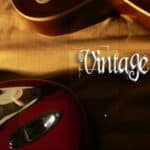


Note the “spatula” headstock and Greek Sigma symbol logo.
#MARTIN GUITAR SERIAL NUMBERS NQ5461 SERIES#
In a 1979 brochure, these were duly delineated as the 7, 5, and 3 series models with higher numbers were given higher-quality materials and more-attentive craftsmanship, as well as overall quality and quantity of appointments. In addition, several new solid-top guitars were rolled out, along with beginner and intermediate instruments. In ’76, Gen II Sigmas made in Japan were introduced with the type S peghead, a new logo, different label, and other changes to synchronize with Martin’s domesitc models. Other twists for Gen II included a line of five Tokai-made electric solidbody guitars, and the first non-guitar – the SB-5 banjo.ĭuring this and later periods, Sigma actually made several types and models of acoustic and electric guitars, but they were mostly exported to Europe and distributed through Levin & Sons, a Martin-owned company based in Sweden. Those tops were part of the upgrades on three models – the DT-22, DR-11, and DR-9 – which also sported a tapered headstock closer to the modern Martin company documents referred to the design as the “type S” peghead. Martin & Co., Nazareth, Pennsylvania, USA.” The model designation was usually hand-written in ink along the bottom border.īy late ’72, the zero fret was being phased out and the saddle made non-adjustable, but still perched on a fixed bridge… except on the 12-string DR-12-7 – a fact that plagued Martin sales reps, who were advised to “convert” dealers to the DM-12-5.īeginning in ’73, certain lower-end models were manufactured in Korea, setting a pattern of multi-country/multi-manufacturers that continued throughout the run.īy 1974, the initial Gen II instruments had arrived, and while they retained the spatula headstock and covered truss rod, they turned things up a notch by introducing solid tops. Some very early DR-7 and DM-5 batches had what collectors call an interior “type zero” white label with a black border and the Gen I logo printed with “Produced and distributed by C.F. The initial batches had a zero fret, covered truss-rod access, and bridges with a saddle “elevator.” Roughly 20 models were offered the classical instruments had slot pegheads, while the acoustic flat-tops were characterized by a flat headstock reminiscent of a chef’s spatula (and now nicknamed as such), with the logo consisting of a gold decal of the word “Sigma” surmounted by the corresponding Greek letter (∑) in mother of pearl. The instruments employed economy-minded materials like laminated woods for their tops, sides, and back, but were generally well-constructed. Seeking to compete in the market for budget-grade instruments, in 1970, Martin began importing acoustic guitars made by subcontractors in Japan.

In an attempt to remedy the situation, we offer this guide to the essential information on the enigmatic brand. Thus, there is scant information on the brand – mostly anecdotes in far-flung strands of the internet suppositional at least, unsubstantiated at best. If you’re one who has developed a taste for them (or other vintage Japanese brands), you likely know that Martin – as it readily admits – kept few notes regarding the Sigma line. Long overlooked and relegated to an obscure corner of the collectible market, Sigma by Martin guitars have recently gained popularity among a new generation of collectors.


 0 kommentar(er)
0 kommentar(er)
